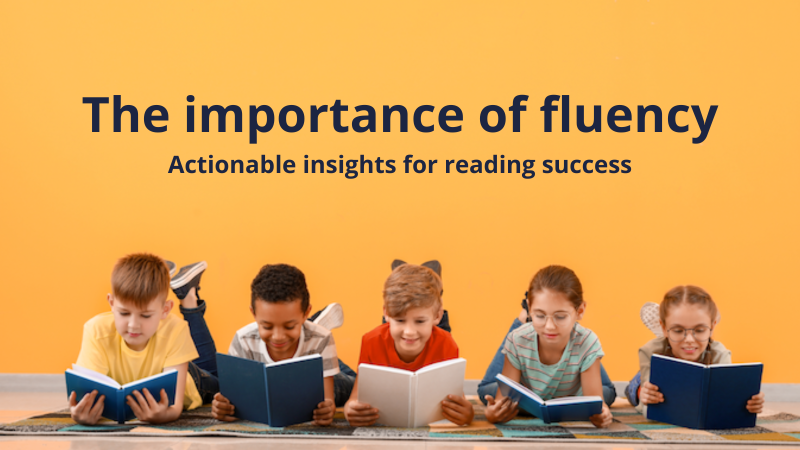Please note: We will continue to deliver your books and furniture until Thursday 18 December for schools, and Tuesday 23 December for public libraries. We will then close for the Christmas break, with deliveries resuming from Monday 5 January 2026. We wish all of our customers a very merry Christmas and a Happy New Year!
For help, advice and telephone ordering call our team on 0121 666 6646
Are you sure you wish to delete this basket?()
This action cannot be undone.
Sorry, something went wrong
Please report the problem here.
The importance of fluency: actionable insights for reading success

April 30th 2024
Fluency has become a buzzword in developmental reading and writing, and is now recognised as a key element for reading success – the teaching of blending and decoding is just the start of the reading journey. In this post, Peters' Children's Book Specialist Natalie explores some key strategies for introducing fluency into the classroom.
What is fluency?Teaching phonics should give a child the ability to read. However, for any reader, simply being able to read the words on a page only gives half the story. Professor Tim Rasinski defines fluency as “the ability to read accurately, quickly, expressively, with good phrasing” which demonstrates the number of skills a child must employ when reading fluently:
When a reader can apply these components to a text which is appropriately pitched for them, then they can be described as a fluent reader. |
|
Why does fluency matter? |
|
|
Fluency develops both reading and an understanding of what is being read. Fluent reading is vital for supporting comprehension because pupils’ reasoning can be redirected from focusing on word recognition to understanding the text. Comprehension is the yardstick that schools are measured against, and we know that children who read more, understand more, and use that knowledge when interpreting unfamiliar texts. In addition, fluency improves developmental reading and writing stamina and enables children to read longer, more challenging texts and sustain their interest and understanding of what they are reading. The DfE's updated Reading Framework (p.8) says, if pupils are not “able to read to an age-appropriate level and fluency…they will be incapable of accessing the rest of the curriculum, and they will rapidly fall behind their peers.” How can reading fluency be developed in the classroom?Fluency, much like phonics, must be developed through explicit instruction. Here are our top ten key strategies for introducing fluency into the classroom.
|
|
|
Once you have established the basics, here are some other strategies you can use in the classroom: 7. Paired reading with a more fluent reader. 8. Using an audio books alongside texts. 9. Incorporate performance into the curriculum – learning a piece to perform promotes natural re-reading and encourages prosody. 10. Consider using book banding to provide suitably challenging and age-appropriate texts. The importance of re-readingFinally, consider the importance of re-reading. Pupils face many challenges when reading an unfamiliar text – new vocabulary, text structure or a lack of background knowledge to draw upon as they read. Therefore, reading a text once is rarely enough for good comprehension. Repeated reading allows pupils to rehearse and refine their reading of complex texts. It is therefore also important to help parents understand that repeat reading and reading easier books such as short chapter books is good practice for improving reading. How Peters can helpIf you're supporting readers beyond Key Stage 2 who need further help with phonics, visit our secondary phonics page. We also have recommendations for texts that can provide scaffolding for reading progression and fluency. Looking for more young adult fiction and non-fiction texts? We have developed guided reading spines, or can even advise on developing your own reading spine that meets your school's needs. |
|
More support from our Schools teamFrom reading fluency strategies to our tailored book selection service, our team of Children's Book Specialists are dedicated to offering their expertise and guidance to support schools.Reach out to us today for tailored support. |
|
📚 READ NEXT: READING FRAMEWORK SERIES: SYSTEMATIC SYNTHETIC PHONICS


 5. Use an assessment tool, such as
5. Use an assessment tool, such as 


